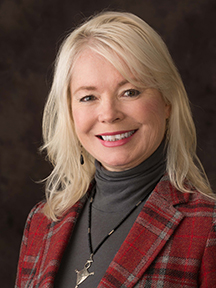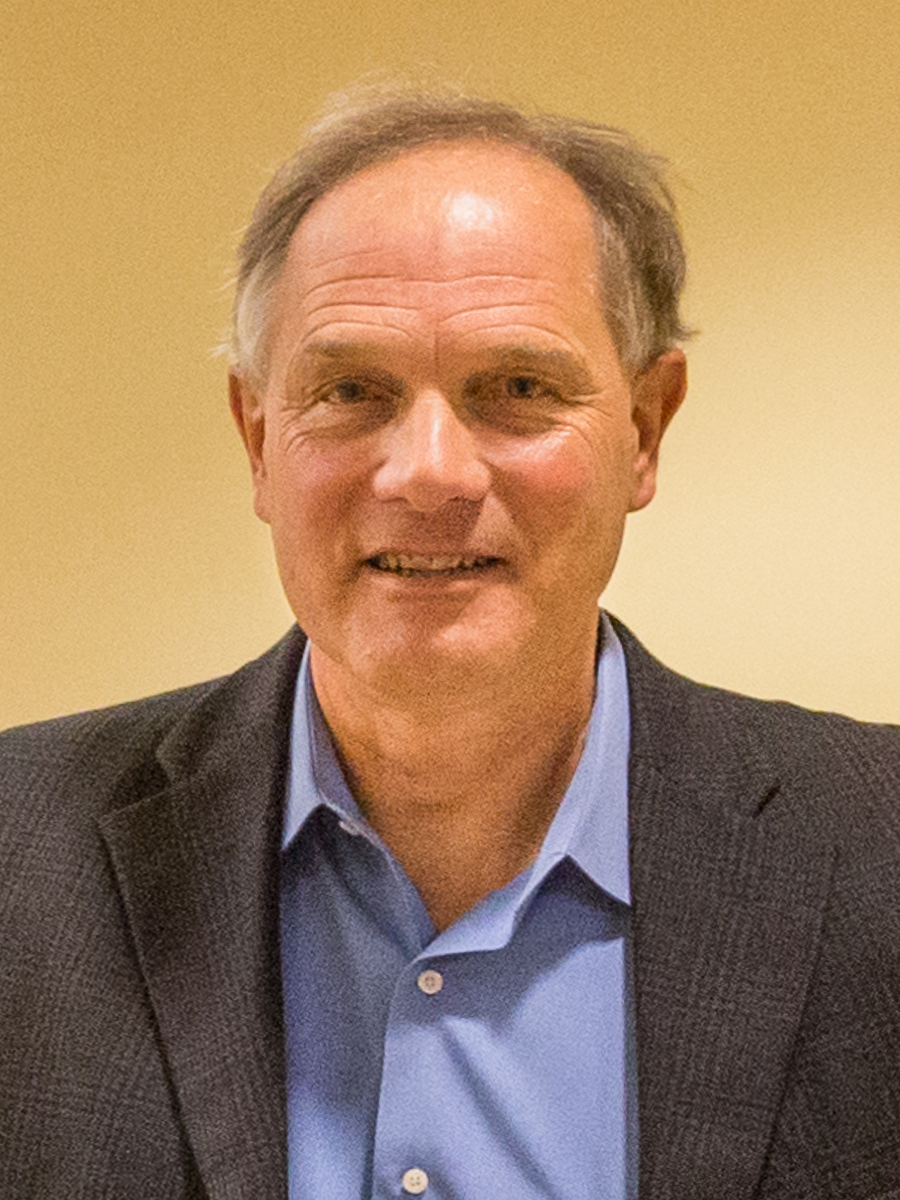
Family support and location may lead to Olympic greatness
06 Feb 2018 By Brad Stauffer
They are known as the fastest humans on earth. Hurtling across the ice under their own power, world-class speed skaters use their powerful legs to propel them to speeds over 30 mph. The world’s best speed skaters spend years of hard work and dedication developing and perfecting their skills. Are their talents the result of genetic favor or developed in a special environment? A recently published research article on talent development by University of Nebraska–Lincoln graduate student Carol Ott Schacht and Educational Psychology professor Ken Kiewra suggests that in the case of three former United States Olympic speed skaters, it was family and location that paved the way for their remarkable success.
The world’s best athletes are gathered in Pyeongchang, South Korea this week as the Winter Olympics unfold on an international stage. Opening ceremonies are Friday. Few of those athletes are as accomplished as Bonnie Blair, Dan Jansen and Dave Cruickshank. Each competed in four different Olympic games. Blair, who married Cruikshank in the 1990s, has six Olympic medals, five of them gold. Cruikshank, who won five national championships, never climbed the awards podium in the Olympics, but like Blair and Jansen, is an inductee in the National Speed Skating Hall of Fame in Milwaukee. After a series of crushing setbacks that included the loss of his sister to leukemia during the 1988 Olympics and several incomprehensible slips or falls in races, Jansen finally won Olympic gold in his final Olympic competition, the 1,000-meter event in the 1994 games in Lillehammer, Norway. He set a world record in that race, and at one time held eight world records.
Ott Schacht is a friend of Blair’s sister and has long had a love for Olympic speed skating. When she took Kiewra’s Creativity and Talent Development graduate course as part of her Ph.D. program in Human Sciences with a specialization in Leadership Studies, she realized that speed skating would be a terrific topic for her culminating assignment on high achievers. Through a mutual friend, she located her old friend, Angela Blair, who she had not been in touch with for more than 20 years.

“This personal re-connection allowed me to conduct an exciting and intriguing original research study with Dr. Kiewra, who had published with other students previously, and who I thought would be a great guide during my first foray into publication,” said Ott Schacht.
The Blair connection opened the door for Ott Schacht to interview the three Olympians, and she called on Kiewra to help her in the project and expand it beyond a class assignment. Kiewra’s research focus has been on talent development for a number of years and has explored a variety of talent domains.
“Once she got access to Blair, Cruikshank and Jansen, she asked me to join the project,” said Kiewra. “She was the student, so I had her direct things and take the lead. I was involved in the interviews and also helped with data analysis and the write-up for publication.”

The data from their interviews, which were done by Skype or telephone, support the idea that talent is developed, not born, said Kiewra. All three skaters grew up in the Upper Midwest near centers of speed skating excellence. Jansen lived in a suburb of Milwaukee, the speed skating mecca of America, where until 1980 it had the only 400-meter ice rink in the country. Blair lived in Champaign, Illinois but traveled nearly every weekend in the winter to train at the Milwaukee oval. Cruikshank is a Chicago native where he also had access to speed skating clubs and facilities, but he also traveled to Milwaukee for training and access to elite coaches.
“Had they been in San Diego or Florida, there’s no way they would have become who they became,” said Kiewra. “But they were all raised in regions where speed skating was big and even more importantly, they were all raised around Milwaukee, and Milwaukee was the king of speed skating regions.”
Kiewra’s research often explores the influence of parents in talent development. While the parents of these three Olympians were certainly supportive and provided encouragement and opportunity, it was siblings that seemed to make the real difference. Blair was the youngest of six children and Jansen the youngest of nine. All of the older siblings were speed skaters and some of them incredibly talented. Being at the end of that long line of skating siblings was absolutely instrumental to the success of Blair and Jansen, said Kiewra.
“Not only did they have the modeling of their siblings, they had the support of their siblings who coached them and brought them along,” said Kiewra. “Even when they surpassed their siblings, the siblings didn’t resent that, but they continued to be their closest allies and coaches.”
“Because I was the youngest by quite a ways, I had a lot of coaches growing up,” Blair told Ott Schacht and Kiewra. “My brothers and sisters filled that spot of being a coach and watching over me, and then later being there at the Olympic games and being very supportive in any way that they could.”
Blair’s two brothers and three sisters were talented skaters. All but her oldest brother became a national or North American champion. She credits them for modeling a drive to win.
“Our family just had a lot of competitive instincts,” Blair said. “We always used to say about my sister, Mary, if we’re going to play a card game, you might as well just let her win or you’re going to stay up all night long until she eventually wins. For all the Blair kids, it was that competitiveness of wanting to be the best at whatever it was we were doing, whether it was playing cards or whether it was out on the ice.”
Jansen came from a family of skaters. He was on skates at 4. Family weekends were spent traveling to speed skating meets. Several of his siblings skated at a national or world level, including his brother Mike who skated with him on two world teams.
“I trained with Mike every day, and he was a world-class skater so it was great to have him by my side,” said Jansen. “At about age 16, I kind of passed Mike and suddenly it was me being the best and me becoming one of the best U.S. sprinters. And, now it was Mike struggling to make the U.S. Team, but never did he hold me back. Never was there a thought or word of resentment or jealousy. Instead, it was always encouragement. He believed in me and helped me believe in myself. He was the single biggest influence in my physical and mental growth as a skater.”
Jansen’s sister Jane was also a major factor in his development. He credits Jane for making him believe that he could be a world-class skater. Sadly, she died of leukemia on the day of his 500-meter race in the 1988 Olympics at Calgary. He was so mentally anguished that he fell in the first turn and did not finish a race he was favored to win. He also fell in the 1,000-meter race and did not medal at Calgary.
“I remember that when I was about 14, Jane said something that forever affected my beliefs about my own skating,” Jansen said. “She just said in conversation one day, in a matter-of-fact way, ‘When you win Worlds…’ At that time, I had no beliefs or even dreams that I could someday win Worlds, but Jane did. And, that stuck with me and reminded me thereafter of what was possible.” He went on to win multiple world titles.
Cruikshank didn’t have skating siblings, but his adopted sister was a talented musician and a key part of his support system as his speed skating talents grew.
“She encouraged me when I had a bad day at the rink; just finding the positives and telling me that it’s okay, you’ll have another day,” said Cruikshank.
In their publication, Ott Schacht and Kiewra concluded “that environmental surroundings and siblings (for Blair and Jansen) were the most influential factors for the speed skaters, whereas parents are the most influential factor today. Modern talent-rearing parents seem more involved than those from decades past and find ways to compensate for inadequate surroundings or minimal family history in the talent domain. Validating this impression will require the telling of both modern and retrospective talent stories.”
“The message for parents interested in this type of success for their children,” said Ott Schacht, “is to consider the resources, willingness and sacrifice necessary to provide the right mix of family and environmental influences needed to generate this development.”
When the first Olympic speed skaters take the ice for competition Saturday (Feb. 10, 2018) in Pyeongchang, you can bet that Bonnie Blair Cruikshank, Dave Cruikshank and Dan Jansen will be recalling their glory days and the people and places that helped them to the pinnacle of speed skating. After their research encounter, Ott Schacht and Kiewra will be taking a renewed interest, as they tune in for the Olympic television coverage.
“Interviewing Bonnie Blair, Dave Cruikshank and Dan Jansen was amazing and exhilarating,” said Ott Schacht. “These were the top Olympic speed skaters from the 80s and 90s and, as hall of famers, living legends. Our research gave us the rare opportunity to have a dialogue with the best of the best in Olympic Speed Skating. Each was easy to talk with, accommodating, warm, kind, and genuinely interested in participating in the project. It was pretty exciting to talk with them and to revisit some of the enthralling experiences they'd had as Olympic royalty.”
Ott Schacht and Kiewra’s article, “The Fastest Humans on Earth: Environmental Surroundings and Family Influences That Spark Talent Development in Olympic Speed Skaters,” was first published January 9 in the online edition of “Roeper Review,” an international, quarterly, refereed journal publishing scholarly articles that pertain to practice, policy, applied research, and theory in all dimensions of gifted education.
For those on the UNL campus, access to the research article is available at https://go.unl.edu/a5kd.
College of Education and Human Sciences
Educational Psychology